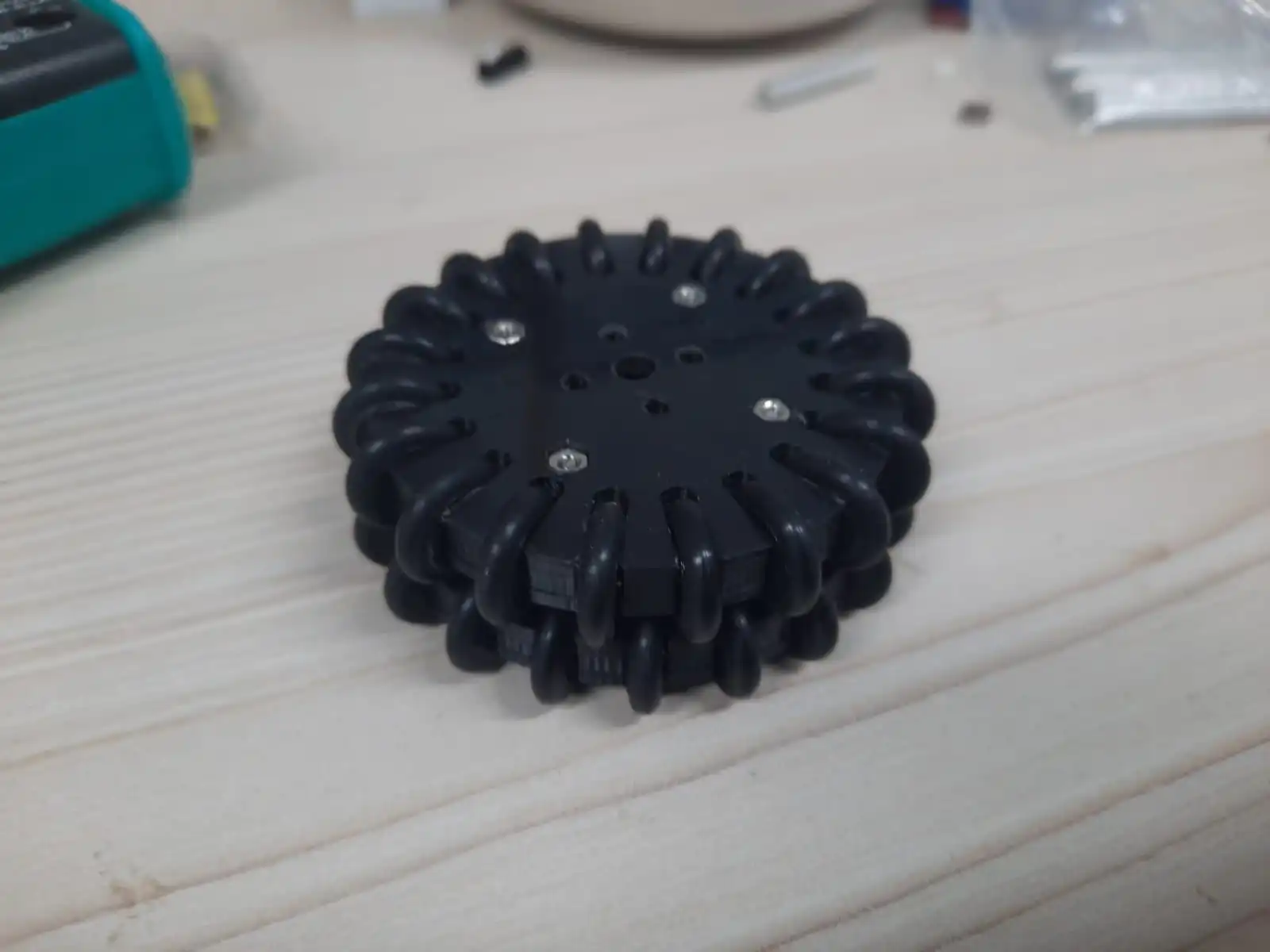Objective
We wanted to find a set of wheels that can ensure that the movment of the robot is smooth so that it does not shake and disrub the image on the mirror. The 2 main factors are the number of rollers on the wheels and the layers on the wheels.
Why Does 2 Layer Wheels Provide A Smoother Image?

When double wheels are stacked its is like increasing the contact points on the floor. Think about the 2 sided polygon when stacked ontop each ofther and offsetssed by a certain angle, this will increase the number of contact points of the wheels to the ground, forming a nicer circle.
SL: Double wheels also ensures that the wheels have a neutral camber which is what we expect.
TODO: Add more pictured and be more descrptive
Final Decision
SL: However, one drawback of using double layered wheels is that some of the layers have to wrap around the motor so that it doesn’t exceed the size limit. Since we were using chihai motors, which have a diameter of 25mm, there will not be much space for the screws that hold all the layers together. This forces us to either use m2 screws or increase the wheel diameter. Using m2 screws is not ideal as they are very thin and can bend/break easily. We were also restricted to a layer height of 30mm between l1 and l2 so that the robot doesnt end up being too tall. Thus, an increased wheel diameter will result in the robot riding higher which is dangerous because another team’s robot can hit the light ring and this also affects the design of the dribbler which is placed on l2 (due to the lack of space on l1).
In the end, we decided to use the single layered wheels as we realised that there was little space in the robot and we could not afford having to stack 2 wheels ontop of each other.
